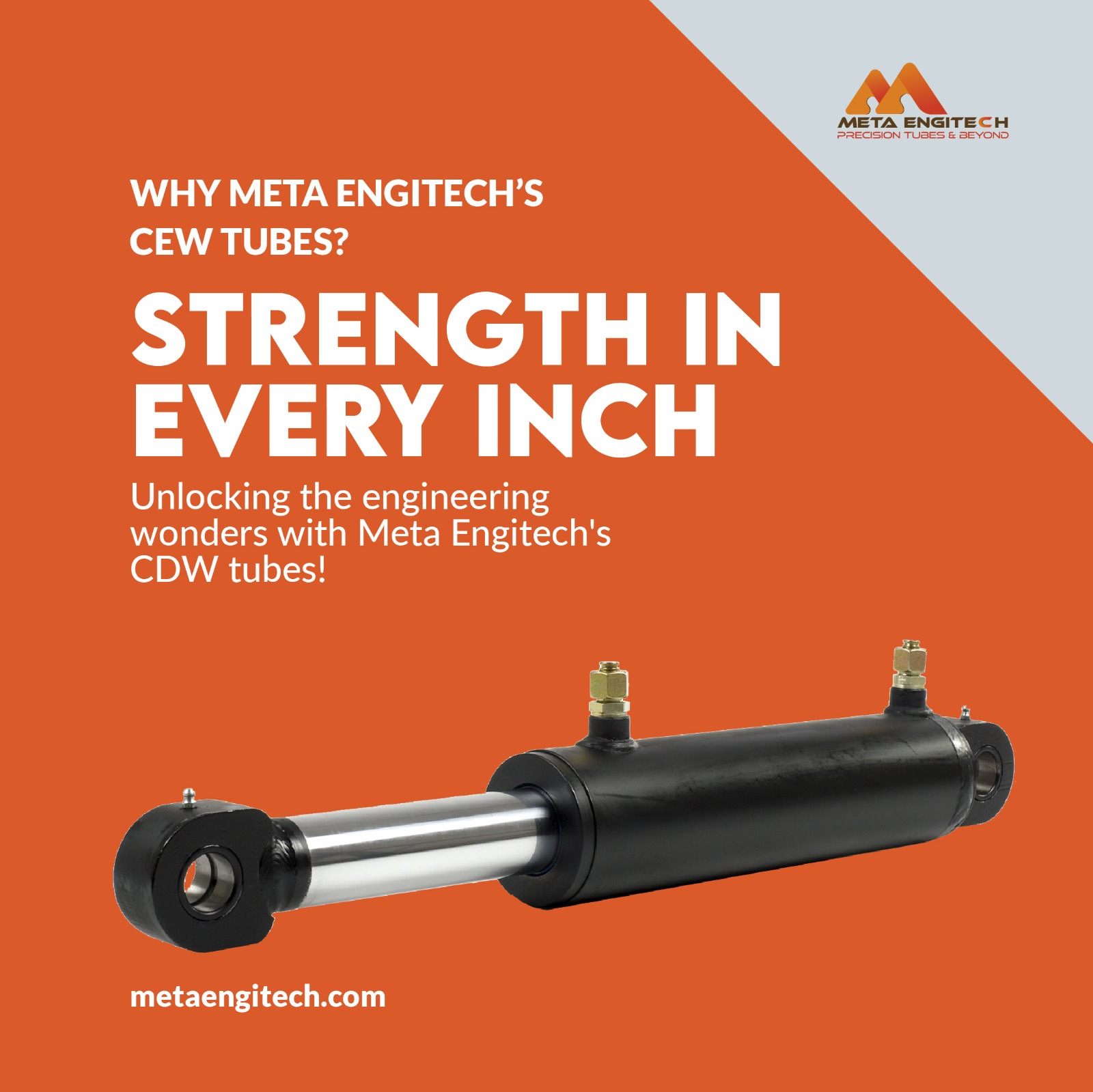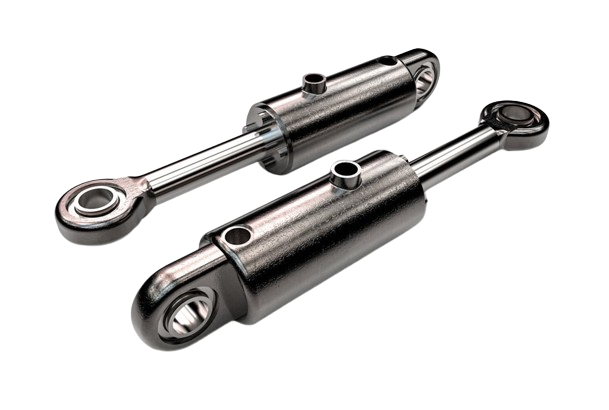Hydraulic Cylinder
The main components of a hydraulic cylinder are the cylinder body, which usually consists of a tube, and a piston rod with a piston. The cylinder body is usually made of seamless steel tube.
Inside the cylinder body, which is designed for the maximum system pressure, the working piston moves with the piston rod. The direction of movement depends on whether the fluid is supplied from the rod side or from the bottom side, resulting in an inward or outward movement. The fluid displaced on the opposite side of the piston is normally returned to the reservoir. The piston, which is fitted with seals, separates the two cylinder chambers and minimizes internal leakage. The cylinder body is closed at the ends with cylinder covers which are either bolted on, welded on or braced with tie rods. These covers house the hydraulic connections, the end-position cushioning and the piston rod guide with the piston rod seals.

Advantages of hydraulic cylinders
Hydraulic cylinders are a very common component in hydraulic systems:
- The use of hydraulic cylinders as direct drives is simple in design and can be easily positioned by the machine builder.
- By eliminating the need to convert a rotary motion into a linear motion, the cylinder drive offers high efficiency.
- A hydraulic cylinder can keep its maximum cylinder force constant from the beginning to the end of the stroke. A simple limitation of the lifting force can be achieved by a pressure valve.
- The piston speed in a hydraulic cylinder depends on the flow volume and the effective piston area. With a constant delivery volume, the piston speed also remains constant from the beginning to the end of the stroke.
- Depending on the design, a hydraulic cylinder can generate only compressive forces or both compressive and tensile forces.
- By appropriately dimensioning hydraulic cylinders, powerful drives can be realized with small installation dimensions.
Types of hydraulic cylinders
Single acting hydraulic cylinders
Single-acting cylinders are designed so that only one side of the piston is pressurized with hydraulic fluid. This means that they can only perform work in one direction. The reset is performed either by an external force, by its own weight or by a separate spring. A special form are plunger cylinders, in which the piston rod surface alone determines the lifting force. Under the same conditions, they produce a lower lifting force than cylinders with disc pistons, but have better mechanical efficiency. Since this design eliminates the additional guidance provided by the piston, external axial guidance of the entire system is essential.
Telescopic cylinder
Telescopic cylinders are a type of cylinder in which several pistons arranged one behind the other are extended or retracted telescopically. This design allows only a discontinuous working speed. The telescopic pistons are lowered either by their own mass or by an external force. Telescopic cylinders are available in single-acting and double-acting versions. They are used in confined spaces or very long working lengths.
Synchronized telescopic cylinders have a special design in which the cylinder spaces of the individual stages are connected by additional cylinder ring spaces. Thus, a constant area is realized for each cylinder stage. As a result, all pistons are moved simultaneously and at a constant speed without pressure or speed shocks.
Mounting types
Hinged eye mounting: Here, joint eyes are attached to both ends of the cylinder. These joint eyes have holes through which bolts or can be guided.
The articulated eye mounting provides more flexibility when mounting the hydraulic cylinder. It allows some freedom of movement and alignment of the cylinder in the application. Small angular deviations or inaccuracies can be compensated for by rotating the articulated eyes.
Swivel eye mounting: Swivel eye mounting is a common method of mounting hydraulic cylinders. It allows the cylinder to rotate or pivot during extension and retraction. This can be useful when the cylinder is used in an application that requires some mobility or flexibility, such as certain types of machinery or vehicles. A common method of attachment is by means of so-called clevises:
These have a fork shape and can be used to fix a cylinder in a certain position while allowing it some mobility.
Flange mounting: With flange mounting, the cylinder head of the hydraulic cylinder is attached directly to the machine or implement with a flange plate or flange ring. This method provides a stable and secure connection between the cylinder and the application.
Threaded mounting: Some hydraulic cylinders have threaded holes in the cylinder head that allow the cylinder to be mounted directly to a corresponding threaded hole in the application. This method provides a strong connection and does not require additional fasteners such as flanges or bolts.
